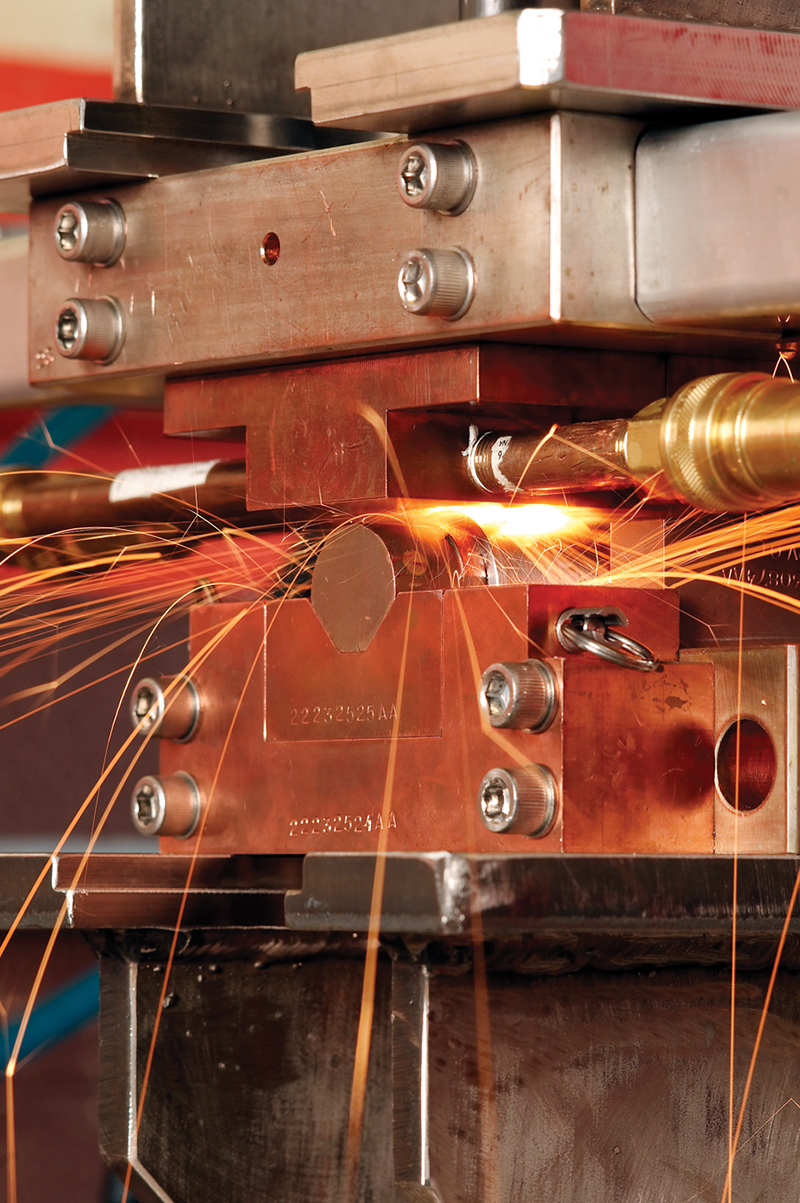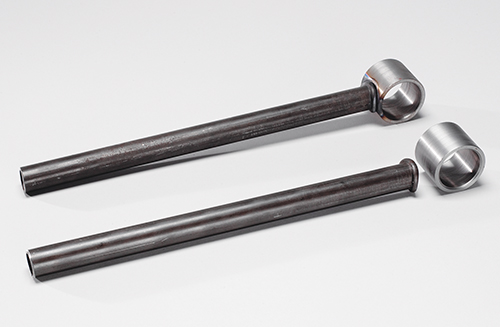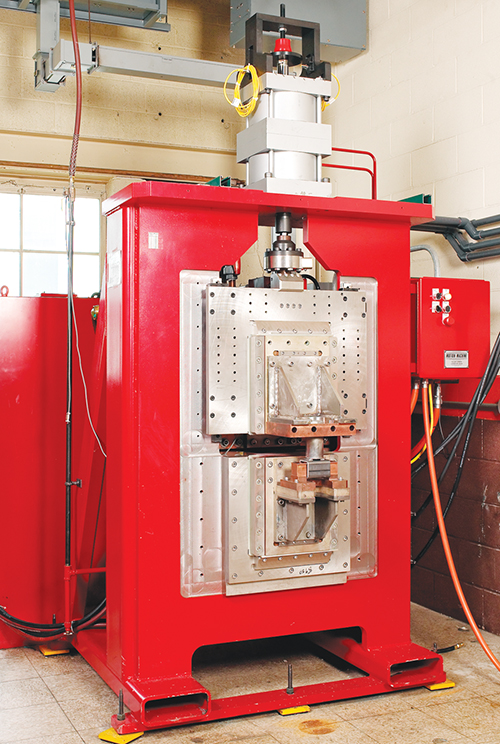
Novel Process Revolutionizes Welding Industry
Originating Technology/NASA Contribution
Deformation resistance welding (DRW) is a revolutionary welding process—a new technique for joining metals—in an industry that has not changed significantly in decades. Developed by the Energy and Chassis Division of the Detroit-based Delphi Corporation (a spinoff company formed by General Motors in 1999), DRW can reduce the cycle time and fabrication cost for a variety of structures using hollow members. Applications include automotive, aerospace, structural, and fluid handling applications.
As the name implies, DRW applies the heat and force of resistance welding, with tooling designed to create the necessary deformation. The process bonds metals atomically and creates solid-state joints through the heating and deformation of the mating surfaces, and as such, requires no additional filler materials. Metal tubes are joined to solid metal forms, sheet metal, and other tubes, creating nearly instantaneous, full-strength, leak-tight welds that can be used to build lean structural assemblies. The leak-tight joints are capable of holding fluids or gasses under pressure and heat, and can have strength exceeding that of the parent metals. DRW promises increases in performance and design flexibility while helping to cut cost, investment, and weight.
In early studies, DRW demonstrated improved quality over conventional welding methods and novel joining capabilities. These studies caught NASA’s eye, and the Space Agency funded further development.
Partnership
NASA’s Glenn Research Center, Delphi, and the Michigan Research Institute (MRI) entered into a research project to study the use of DRW in the construction and repair of stationary structures with multiple geometries and dissimilar materials, such as those NASA might use on the Moon or Mars. Delphi worked with the MRI (a not-for-profit organization created to speed the development of emerging technologies) to obtain an initial $2.17 million in the form of two grants, which were used to help develop new weld joint design configurations, perfect existing welding techniques, and equip a laboratory with technicians to test DRW. NASA analyzed the test results to understand how DRW could be used to weld different types of metal on Earth and in space, with an eye toward eventually using DRW to weld structures on the Moon and Mars.
Initial testing proved promising, and in 2005, Delphi created SpaceForm Inc., also of Detroit, to commercialize the DRW technology. NASA, encouraged by the testing, provided additional funding for a joint research partnership between Delphi, SpaceForm, and the Edison Welding Institute (EWI). Based in Columbus, Ohio, EWI is North America’s leading engineering and technology organization dedicated to welding and materials joining. EWI’s staff provides materials joining assistance, contract research, consulting services, and training to over 3,300 member company locations, representing world-class leaders in the aerospace, automotive, defense, energy, government, heavy manufacturing, medical, and electronics industries.
The EWI collaboration continued development of the DRW process and explored applications in ferrous and non-ferrous metals, dissimilar material joints, lean tubular structures, and concepts for future manufacturing cells. With EWI and NASA support, SpaceForm was able to advance DRW development toward production capabilities and narrow manufacturing parameters, making it a reliable, proven process. For these accomplishments, SpaceForm was awarded the Michigan Technology Leaders’ “Corporate Partnership Award” for 2006.
“We’re very pleased to have NASA’s continued support,” said Tim Forbes, director of commercialization and licensing at Delphi Technologies Inc., a subsidiary of Delphi Corporation. “The funded development projects with NASA have allowed us to gain a better understanding of the DRW joining process relative to a variety of materials, multiple joint configurations, joints with dissimilar materials, and the associated tooling and fixturing requirements. This work is supporting NASA objectives and is helping Delphi develop DRW for additional markets and customers.”
Product Outcome
Current welding technologies are burdened by significant business and engineering challenges, including high costs of equipment and labor, heat-affected zones, limited automation, and inconsistent quality. DRW addresses each of those issues, while drastically reducing welding, manufacturing, and maintenance costs.
Manufacturers can expect lowered materials and capital costs and a significant reduction in welding cycle time. Additional advantages include localized heat application, and solid-state weld flexibility. The process can join dissimilar materials and shapes, is geometry-independent, and still automation friendly. Further, DRW is compliant (code case 2463) with the American Society of Mechanical Engineers and recognized for tube-to-tubesheet and heat exchanger manufacturing.
In addition to boasting a handful of manufacturing advantages, end-users will appreciate that the process eliminates weld leakage, that the weld is stronger than the parent metal, and that the method extends a product’s service life. The process also eliminates tube thinning and porosity.
“The list of potential applications quickly grew from an initial chassis/suspension application,” said Jayson D. Pankin, Delphi’s new venture creation specialist and co-founder of SpaceForm Inc. “Other potential automotive applications, which could benefit from tube construction, like roof frames, cross-car beams, exhaust systems, and chassis module assemblies were immediate opportunities. The technology also has potential applications in medical devices, bridges, water heaters, plumbing, and more. Virtually anything that could benefit from tube welding.”
DRW can reduce cycle time and cost in manufacturing an array of tubular structures. The technology can provide enhanced design flexibility in transportation and stationary applications, including motorcycles, recreational vehicles, bicycles, and wheelchairs, all while cutting cost investment in time and material.

Deformation resistance welding uses include exhaust systems, tubular space frames, fluid-based mechanical systems, and load-bearing structural applications.

Deformation resistance welding’s potential applications are numerous, though SpaceForm Inc. has targeted the automotive and non-automotive industries as ideal launch points for this state-of-the-art new technology.

Deformation resistance welding drastically reduces welding, manufacturing, and maintenance costs.













